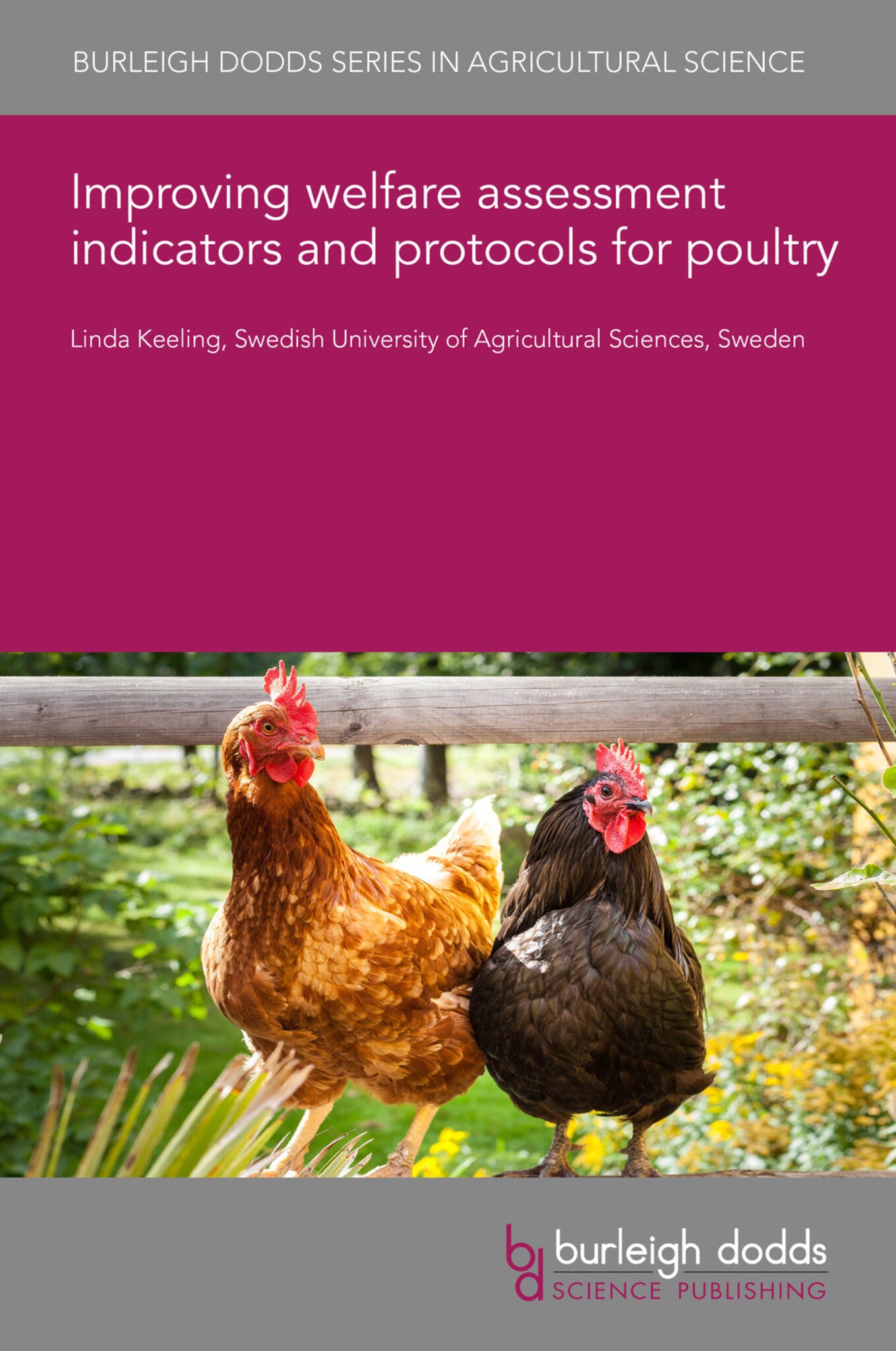We're sorry. An error has occurred
Please cancel or retry.
Improving welfare assessment indicators and protocols for poultry
Regular price
£25.00
Sale price
£25.00
Regular price
£25.00
Unit price
/
per
Sale
Sold out
Re-stocking soon
There have been considerable advances in welfare assessment in the past decades. This chapter explains some of the terminology related to welfare assessment and why the emphasis is moving towards i...
Read More

Some error occured while loading the Quick View. Please close the Quick View and try reloading the page.
Couldn't load pickup availability
- Format:
-
28 September 2020

There have been considerable advances in welfare assessment in the past decades. This chapter explains some of the terminology related to welfare assessment and why the emphasis is moving towards including indicators of poultry welfare taken on the birds themselves rather than from the environment. It also reviews some of the more commonly used laying hen and broiler welfare assessment indicators, focusing on those that reflect the behaviour of birds. Among the clinical indicators discussed are assessments of pecking damage and bird cleanliness. Behaviour indicators include those that are recorded from undisturbed birds, such as vocalisation, and those that use a test situation. A welfare assessment protocol is a description of the procedures to collect the indicators. In the final sections of this chapter, methods to prioritise between different indicators, depending on the purpose of the assessment, and future trends to improve poultry welfare assessment are discussed.

Price: £25.00
Publisher: Burleigh Dodds Science Publishing
Imprint: Burleigh Dodds Science Publishing
Series: Burleigh Dodds Series in Agricultural Science
Publication Date:
28 September 2020
ISBN: 9781786768711
Format: eBook
BISACs:
TECHNOLOGY & ENGINEERING / Agriculture / Animal Husbandry, Poultry farming, TECHNOLOGY & ENGINEERING / Agriculture / Sustainable Agriculture, Animal husbandry, Sustainable agriculture

1 Introduction 2 Welfare assessment protocols 3 Welfare assessment indicators 4 Examples of animal-based measures 5 Prioritising welfare indicators 6 Future trends 7 Conclusion 8 Where to look for further information 9 References



